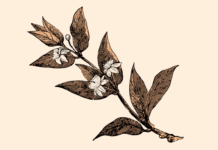As cold and flu season reaches fever pitch, the demand for complementary medicines to help prevent and manage colds and influenza is increasing. A new paper emphasises the risks associated with these medicines, and the role pharmacists have in advising consumers about the evidence of efficacy and possible drug interactions.
The paper, published in Australian Prescriber, noted that interactions between complementary medicines and prescription drugs are common, but can be difficult to prevent given the different legislative process between registered medicines and complementary medicines.1
The paper’s author and Associate Professor at the University of Queensland’s School of Pharmacy, Dr Geraldine Moses, told Australian Pharmacist that these findings are particularly important during cold and flu season when complementary medicines ‘sell like hotcakes’, even when there is limited evidence to support their efficacy.
She noted that complementary medicines do not undergo the same rigorous regulatory process from the Therapeutic Goods Administration (TGA) as other medicines. They are instead classified as ‘listed medicines’, meaning that manufacturers submit a listing request to the TGA and pay the necessary fee before marketing is approved.
‘As a result, the stated ingredients of complementary medicines are accepted on trust. There is no guarantee that the ingredients list is accurate,’ the paper read.
The paper stated both misinformation on labels and a lack of knowledge around the way in which complementary medicines interact with other medications, can impact their efficacy and increase their toxicity.1
To ensure that patients do not experience interactions between complementary medicines and their other medications, Dr Moses urged pharmacists to discuss possible interactions with their customers, especially those who are taking other medicines.
She encouraged pharmacists to be particularly aware of echinacea, which can aggravate autoimmune disease and can impair the activation of oseltamivir (Tamiflu), a drug used to treat influenza, along with a host of other medicines.
Dr Moses also noted that many herbal remedies have antiplatelet effects which can increase the risk of bleeding from other ‘blood-thinning’ drugs. They can also inhibit metabolic enzymes and drug transporters, altering the serum levels of other medicines.
‘Our role is to help consumers make informed decisions. It’s a coaching role rather than educational. Consumers need to learn to seek information about potential risks of complementary medicines, which should be weighed against the potential benefit, and needs to be expressed in terms of a concrete functional outcome,’ she said.
‘Most consumers realise this once you explain it to them, it’s just that few people take the time to explain it and show them how to do it.’
References
- Moses G. What’s in complementary medicines? Aust Prescr 2019;42:82–3. At: https://www.nps.org.au/australian-prescriber/articles/whats-in-complementary-medicines



 Pharmacists have always prescribed, but they have the potential to prescribe much more
Pharmacists have always prescribed, but they have the potential to prescribe much more



 Sponsorship information
Sponsorship information


 Talking to patients who have questions
Talking to patients who have questions







